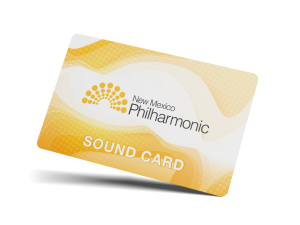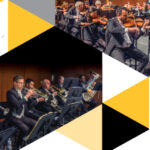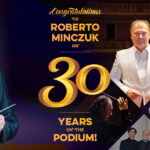Concert Review: October 18 Bach to Bach! Concert at the NHCC
This review appeared in the 2015 Albuquerque Journal. Reprinted with kind permission.
by D.S. Crafts
At the appointment of the new music director in Leipzig one of the town councilors famously said: “As the best musicians are not available, I suppose we must take one of the second rate.” Thus a contemporary evaluation of the music of Johann Sebastian Bach, now frequently acknowledged as the greatest composer of any era. “The jewel of the Baroque,” he was called by guest conductor Grant Cooper.
Sunday the New Mexico Philharmonic brought an afternoon of Bach’s orchestral music to the National Hispanic Cultural Center, “Bach to Bach!” conducted by Cooper who a year ago led the orchestra in an excellent Beethoven 9th Symphony. Here he directed well-sculpted and dynamic readings of all four works on the program, allowing ornamentation to expand freely yet never getting in the way of the essential musical fabric. His verbal introductions to each piece were both insightful and to the point.
Bach’s four Orchestra Suites begin with an Ouverture, from the French style and affectation, followed by a series of French dance forms. No French composer even took the forms to such lofty heights. The First Suite is cast in eight movements, all played with crisp, rhythmic movement, clearly delineating the difference in character of each dance.
The Concerto for Violin and Oboe provided an opportunity for two of the Philharmonic’s best to step into the spotlight. Violinist Ruxandra Simionescu-Marquardt and English horn and oboist Melissa Peña combined talents for a superb blending of disparate instruments. While the original work was lost, this concerto was reconstructed from its later arrangement for two harpsichords. The polyphonic texture reaches its full fruit with the extended melodies of the middle movement. An engaging and spirited dialogue between the two players characterized the entire work, Marquardt’s rich, full-bodied sonority weaving together beautifully with Peña’s long, sensuous and colorful melodic lines.
Of all Bach’s works the Brandenburg Concertos have been most widely recognized. In many ways they sum up the entire achievement of the Baroque musical period, the most profound expression of the age both in technique and emotion. Yet they went all but unnoticed in Bach’s lifetime. All are for different, even sometimes unique combinations of instruments.
The 6th Concerto with its use of low strings and no violins may hearken back to English consort music yet with Bach’s own highly-identifiable melodic style. Its three movements stand in contrast to the brighter, more Italiante remainder of the set.
Violists Shanti Randall and Sigrid Karlstrom combined with some running passage work from cellist Joan Zucker in the opening movement. The final Allegro conjured a vision of prancing thoroughbreds strutting their considerable abilities.
The 4th Orchestral Suite was likely the second composed, probably about 1725. With its two trumpets the work had what Cooper called a Christmas sound to it. Indeed there could be no more joyous way to end a concert than the Réjouissance final movement.




